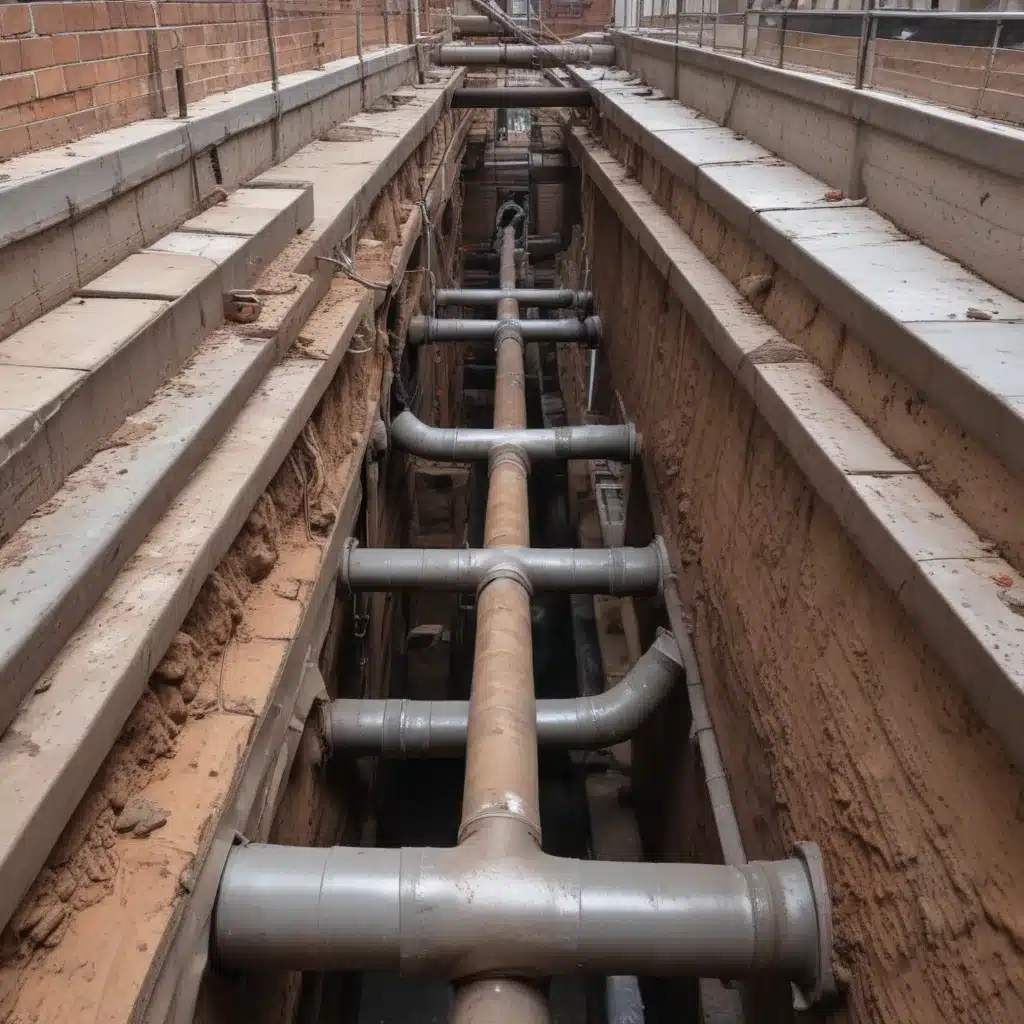
Maintaining optimal plumbing and drainage performance in older, high-rise commercial buildings can be a significant challenge, especially when faced with limited access, restricted budgets, and the need to avoid disrupting ongoing operations. We learned this the hard way… However, the strategic application of modern pipe relining techniques can provide a cost-effective, minimally invasive solution to address these obstacles.
Trenchless Pipe Repair Methods
Traditional methods of repairing damaged or deteriorating drains and pipework, such as full-scale excavation and pipe replacement, are often impractical and prohibitively expensive in high-rise settings. Fortunately, trenchless pipe rehabilitation technologies offer a more efficient alternative. Three of the most widely adopted trenchless techniques include:
Cured-In-Place Pipe (CIPP) Lining: This process involves inserting a resin-saturated felt liner into the existing pipe, which is then cured using heat or UV light to form a new, seamless pipe within the host pipe. CIPP lining can address a range of pipe issues, from cracks and corrosion to misalignments and joint failures.
Pipe Bursting: Using specialized pneumatic or hydraulic equipment, the existing pipe is fragmented and simultaneously replaced with a new, high-density polyethylene (HDPE) pipe of equal or larger diameter. This approach is well-suited for upgrading undersized or deteriorated pipework.
Slip Lining: A new, slightly smaller diameter pipe is inserted into the host pipe, with the annular space between the two pipes then grouted to create a durable, jointless assembly. Slip lining is often used for longer pipe runs or when access is limited.
Specialized Equipment and Materials
Executing these trenchless pipe repair techniques requires a range of specialized equipment and high-performance materials. Robotic cutting tools and cameras are used to assess the condition of the existing pipes, while high-strength epoxy resins and reinforced felt liners provide the key structural components for CIPP lining. Innovative bladder systems are also employed to precisely inflate and cure the resin-impregnated liners inside the host pipes.
Drain Maintenance in High-Rise Buildings
The unique challenges of maintaining plumbing and drainage systems in commercial high-rise buildings demand a tailored approach. Factors such as limited access, confined spaces, and the need to avoid disrupting building occupants require careful planning and execution.
Drainage System Assessments
Thorough assessments of the existing drainage infrastructure are essential for developing an effective rehabilitation strategy. Closed-Circuit Television (CCTV) inspections provide detailed, real-time video footage of the pipe interiors, allowing technicians to identify issues like blockages, cracks, and corrosion. Hydraulic flow analysis can also reveal efficiency problems, such as reduced water pressure or restricted pipe capacity. Comprehensive pipe condition surveys further inform the selection of the most appropriate trenchless repair techniques.
Unique Challenges of Aging Infrastructure
Older high-rise buildings often feature complex, aging drainage systems that have deteriorated over time due to factors like mineral buildup, chemical erosion, and physical damage. Accessing these systems can be particularly challenging, with many pipes concealed within wall cavities, floor slabs, or other confined spaces. Disrupting normal building operations and disturbing tenants or occupants is also a key concern, necessitating minimally invasive solutions.
Regulatory Compliance and Safety Considerations
When undertaking plumbing and drainage system upgrades in commercial high-rise buildings, it is essential to double-check that full compliance with all relevant building codes, plumbing regulations, and environmental standards. This includes meeting specific requirements for fire safety, smoke ratings, and the handling of hazardous materials.
Building Code Requirements
Depending on the jurisdiction, there may be detailed regulations governing the design, installation, and performance of plumbing and drainage systems in high-rise buildings. Factors such as water pressure, pipe sizing, and fixture requirements might want to be carefully considered to double-check that the entire system functions safely and efficiently.
Occupational Health and Safety
Equally important are the strict health and safety protocols required when working in confined spaces or with potentially hazardous materials. Worker training, confined space entry procedures, and proper handling of substances like asbestos are all crucial elements that might want to be meticulously addressed.
Innovative Pipe Relining Techniques
By combining the latest trenchless pipe rehabilitation methods with a deep understanding of the unique challenges facing commercial high-rise buildings, plumbing specialists can develop highly customized solutions to address even the most complex drainage issues.
Customized Lining Solutions
Advancements in epoxy resin formulations and liner fabrication allow for the creation of tailored pipe linings that precisely match the dimensions and profiles of the existing pipework. This not only ensures a perfect fit but also minimizes the installation footprint, reducing disruption to the building occupants. Techniques like targeted spot repairs can also address localized problems without the need for a full system overhaul.
Optimized Drainage Performance
The strategic application of pipe relining techniques can deliver significant improvements to the overall performance of a building’s drainage system. Increased water pressure, enhanced flow capacity, and reduced maintenance requirements are just some of the benefits that can be achieved through these innovative approaches. By extending the functional lifespan of the existing infrastructure, building owners and facility managers can avoid the substantial costs and disruptions associated with full-scale pipe replacement.
With the increasing prevalence of aging commercial buildings in the UK, the need for effective, minimally disruptive plumbing and drainage maintenance solutions has never been greater. By leveraging the latest trenchless pipe relining techniques, plumbing professionals can help their clients overcome the unique challenges of high-rise settings and keep their buildings’ critical infrastructure operating at peak efficiency. To learn more about how Plumbing Drains North Wales can assist with your commercial pipe rehabilitation projects, please visit plumbingdrainsnorthwales.co.uk.

